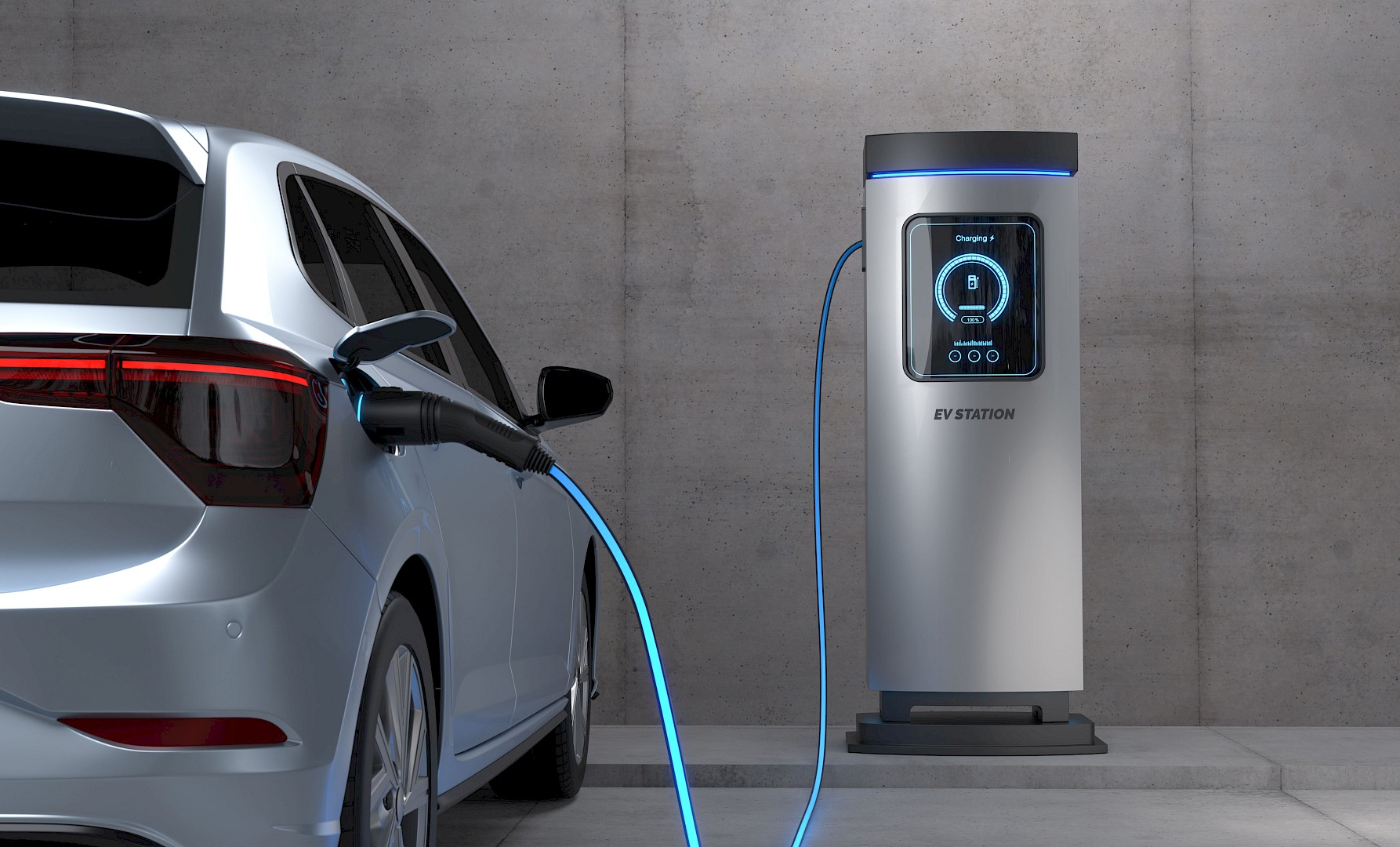Eight moves to lead the global EV growth wave
4 November 2025 — As EV technology and infrastructure mature, the next global growth surge is taking shape. Automakers that deliver reliable value and build connected ecosystems around the right price point will define the next century of mobility leadership.

Download this post (PDF)
The global electric vehicle (EV) market is maturing, not slowing. As early growth drivers (headline range, government subsidies, and first-mover hype) fade, the next phase will reward cost discipline, charging reliability, and seamless localization. Traditional automakers from Europe, North America, Japan, and Korea can still reclaim momentum, but only if they industrialize smarter, collaborate deeper, and think globally while executing locally.
Chinese manufacturers have set the price and scale benchmark, but Western and Asian OEMs have enduring strengths: engineering depth, software expertise, sophisticated supply networks, and brand trust. This playbook outlines eight strategic moves to help them turn today’s friction into durable advantage – from cost-right design and scalable architectures to ecosystem partnerships, regional plays, and safety leadership. Success will come to those who integrate affordability, dependability, and local insight faster than others. The goal is simple: make 2026 not a stress test, but the year confidence returns to the EV industry.
The global EV transition is entering its second act
Despite short-term challenges and uneven adoption, the global EV market continues to mature. Growth has slowed in parts of Europe and North America, but demand remains resilient as more countries tighten emissions rules and extend infrastructure incentives[1]. The early-adopter phase is giving way to mass-market competition, bringing with it the familiar “chasm” that separates curiosity from commitment. Yet the competitive landscape continues to evolve dynamically, with new players, new chemistries, and new business models reshaping how vehicles are built, sold, and supported.
China’s automakers (BYD, NIO, XPeng, and others) have mastered vertical integration and design-to-cost at a scale that has redefined global price expectations[2]. Their models, whether sold abroad or not, have become the reference point for affordability and manufacturing efficiency. But for established OEMs in Europe, North America, Japan, and Korea, the path forward is not imitation. It is reinvention – industrializing with greater speed, integrating cost efficiency into scalable platforms, and leveraging longstanding strengths in safety, reliability, and system engineering.
Move 1: Make charging a product feature, not an afterthought
Charging is now the real measure of EV maturity. Range anxiety has been replaced by what drivers increasingly describe as charging anxiety – uncertainty about availability, uptime, or payment. In the US, one in five public charging attempts fails[3]. Across Europe and Asia, inconsistent networks and fragmented payment systems have made even routine trips unpredictable.
Automakers that treat charging as a core part of the vehicle experience will win. Plug-and-charge functionality, accurate route planning, and transparent pricing are not convenience features; they are brand differentiators. Reliability should be monitored and managed like any other part of the vehicle ecosystem. The most trusted EV brands will be those that ensure the driver never has to think twice about where, when, or how to recharge. In the next phase of the market, confidence will be as valuable as capacity.
Move 2: Scale smart – shared architectures that deliver cost and speed
Cost discipline is no longer a separate initiative. It is the result of scalable design. Automakers that standardize components, powertrains, and software architectures across multiple models will naturally achieve cost advantages through reuse and faster iteration. Hyundai’s E-GMP platform, seen in recently successful cases of Ioniq 5, Ioniq 6, and Kia EV6, demonstrates how shared hardware and modular software can accelerate development and reduce complexity[4].
A truly scalable platform allows automakers to design multiple body types, adjust pack sizes, and deploy software updates across the fleet with minimal reinvestment. The lesson is clear: modularity equals speed, and speed equals savings. By using digital twins for faster prototyping, integrating supplier co-design, and anchoring mainstream vehicles in cost-efficient chemistries such as LFP, OEMs can close the cost gap without cutting quality. The brands that industrialize smarter through reuse, automation, and design discipline will achieve parity not by trimming value, but by multiplying it.
Move 3: Localize intelligently – integrate ecosystems, not just factories
Localization has shifted from compliance to strategy. Incentive structures such as the US Inflation Reduction Act and Europe’s battery passport regulations have made local content a prerequisite for competitiveness. But localization now extends beyond materials. The real opportunity lies in integrating software, data, and service ecosystems into regional contexts.
Automakers must not only build factories within tariff walls but also embed themselves in the digital and physical infrastructure of each market. That means collaborating with regional navigation and safety-data providers, working with public agencies on road and charging networks, and designing modular software that connects seamlessly with local applications and payment systems.
Android Auto and Apple CarPlay proved the value of long-term integration between vehicles and users’ digital lives, but the next step is deeper. OEM-owned ecosystems could unite maintenance scheduling, charging, payments, and even valet or on-demand repair services into a single experience. Localization that bridges software, services, and public infrastructure will generate loyalty that lasts far beyond the warranty period.
Move 4: Compete smarter in Europe’s fragmented market
Europe remains both the most advanced and the most complex EV arena. Demand is strong, but profitability is fragile, and Chinese brands are expanding aggressively[5]. Success will depend on targeting the right segments with the right economics.
For passenger vehicles, efficiency and practicality matter more than sheer performance. A- and B-segment cars (smaller passenger vehicles) dominate volumes, yet achieving sustainable margins requires designing for repairability, WLTP efficiency, and low manufacturing complexity. Co-locating pack and final assembly can reduce logistics emissions, while over-the-air feature customization can substitute for hardware options that drive cost.
The European transition is not just about city cars. Fleets, delivery vans, and public transport are becoming electrification growth engines. These buyers prioritize uptime and lifecycle cost over styling. Automakers that align their offerings with these real-world needs (combining energy efficiency, serviceability, and policy compliance) will thrive even as competition tightens.
Move 5: Differentiate in North America with charging and experience
In North America, the EV playing field has leveled on hardware. Range, charging power, and battery chemistry are converging. What will set brands apart is experience. The automaker that makes charging predictable, pricing transparent, and ownership effortless will capture the next generation of adopters.
Drivers value confidence more than claims. Investing in reliable charging networks, integrating predictive charging and thermal management into navigation, and designing stations that feel as safe and accessible as gas stations will be critical. Every minute saved and every frustration avoided becomes part of brand equity. In a market known for long commutes and long distances, trust, not torque, will define leadership.
Move 6: Capture Asia beyond China
Asia remains the largest market, but outside China, EV adoption is still in its early stages. Japan, Korea, and Southeast Asia together represent close to 10 million annual vehicle sales, yet the average EV penetration remains under 10 percent[7],[8],[9]. The barriers are practical as much as economic: dense cities limit home charging, infrastructure varies widely, and brand trust drives purchasing decisions.
Automakers that approach Asia as a mosaic rather than a monolith will win. Compact vehicles with fast-charging capabilities and well-integrated digital services can thrive in urban centers, while partnerships with utilities, ride-hailing platforms, and logistics fleets can accelerate infrastructure deployment. Governments in the region increasingly reward companies that commit to local production and technology transfer. Success will depend not on exporting models from afar but on embedding within these markets – adapting to their lifestyles, policies, and pace.
Move 7: Build a cost-right and resilient supply chain
Battery materials now shape the economics of the entire vehicle. Automakers face a delicate trade-off between LFP and NMC chemistries. LFP offers stability and lower cost but lower energy density, while NMC provides higher performance at higher price and supply volatility[6]. Recycling and traceability are becoming equally strategic, as regulations mandate proof of ethical sourcing and lifecycle accountability.
Resilience must become the organizing principle of supply strategy. Automakers can achieve it through multi-year indexed sourcing contracts, dual suppliers for critical inputs, and pack designs that support second-life applications. Emerging technologies such as solid-state and sodium-ion batteries could shift the balance again[10]. The companies that design their supply networks as living systems – flexible, traceable, and adaptive – will weather market swings and regulatory shocks better than those that optimize only for cost.
Recent developments make diversification even more urgent. In October 2025, China introduced new export controls on key battery components including lithium-ion batteries, rare earth metals, and cathode and anode materials, further tightening license requirements for overseas shipments[11]. Given China’s dominance in global battery material production (85% of anodes, 82% of electrolytes, 74% of separators, and 70% of cathodes in 2022, according to the US Energy Information Administration)[12], such measures heighten both cost and geopolitical risk. These moves underscore that material security is no longer a one-time issue to work around, but a structural factor that will shape long-term competitiveness. Automakers must respond proactively by building diversified regional supply bases, investing in recycling and alternative chemistries, and maintaining close coordination with policymakers to ensure sustained EV growth in an increasingly politicized materials landscape.
Move 8: Make safety and transparency a selling point
Battery fires and recall incidents have shaken consumer confidence and drawn regulatory scrutiny[13]. As electrification expands, safety is becoming as much a selling point as performance once was. Automakers must treat safety not as compliance but as brand promise.
Packs should be engineered to prevent thermal propagation and isolate cells in case of failure. Chemistry should be chosen for stability in mainstream models. Companies that publish clear responder guides, share safety data openly, and provide warranties that cover degradation and repair (not just replacement) will gain credibility that marketing alone cannot buy. Transparency and rapid response when incidents occur will distinguish the mature from the merely ambitious. The next wave of EV leadership will rest on visible responsibility.
Execute with eyes open
Execution risk now defines the industry. Incentives, supply dynamics, and public expectations can shift overnight. Automakers must build decision frameworks that allow quick reaction: option-based planning tied to live data, preauthorized moves when key thresholds are hit, and scenario models that guide sourcing, pricing, and localization choices.
Compliance, cost, and reliability should not be afterthoughts; they are part of the design process itself. The automakers that embed flexibility and foresight into their operating models will move faster when uncertainty strikes.
Make 2026 the inflection point
By 2026, the global EV market will enter its most decisive phase. Carbon rules will tighten further, subsidy landscapes will stabilize, and new entrants will test incumbents’ agility. The winners will be those that deliver scalable, affordable vehicles, turn charging into a dependable product experience, localize ecosystems intelligently, and lead with transparency and trust.
Electrification is not a project to survive, but a system to perfect. Those who treat it that way will transform the EV industry from a story of policy dependence into one of industrial confidence and consumer loyalty. The transition’s outcome is not predetermined. It belongs to those who execute with conviction.
References:
[1] International Energy Agency (2025). Global EV Outlook. Retrieved from https://www.iea.org/reports/global-ev-outlook-2025 on November 3, 2025
[2] BloombergNEF (2025). Electric Vehicle Market Outlook Q3 2025. Retrieved from https://about.bnef.com/electric-vehicle-outlook/ on November 3, 2025
[3] J.D. Power. U.S. Electric Vehicle Experience (2025) Public Charging Study. Retrieved from https://www.jdpower.com/business/press-releases/2025-us-electric-vehicle-experience-evx-public-charging-study on November 3, 2025
[4] Hyundai Motor Group (2024). Hyundai Motor Group’s Electric Vehicles Dominate Global Stage. Retrieved from. https://www.hyundai.com/worldwide/en/newsroom/detail/hyundai-motor-group%25E2%2580%2599s-electric-vehicles-dominate-global-stage-0000000719 on November 3, 2025
[5] ACEA (2025). Market Report on EV Imports and Tariffs. Retrieved from https://www.acea.auto/industry-topics/electric-vehicles/ on November 3, 2025
[6] Wood Mackenzie (2020). LFP to overtake NMC as dominant stationary storage chemistry by 2030. Retrieved from https://www.woodmac.com/press-releases/lfp-to-overtake-nmc-as-dominant-stationary-storage-chemistry-by-2030/ on November 3, 2025
[7] Carscoops (2025). Japan’s EV Sales Crash By 33% In 2024, But Foreign Brands Shine. Retrieved from https://www.carscoops.com/2025/01/japans-ev-sales-crash-by-33-in-2024-but-foreign-brands-shine/ on November 3, 2025
[8] Focus2Move (2025). South Korea 2024 EV Market, Led By Tesla, Outpaces Broader Downturn. Retrieved from
https://www.focus2move.com/korean-vehicles-market-2024-2/ on November 3, 2025
[9] Mail Business News Korea (2025). Korean automakers cede Southeast Asia No. 2 spot to China. Retrieved from https://pulse.mk.co.kr/news/english/11432653 on November 3, 2025
[10] Charged EVs (2025). CATL plans to mass-produce Naxtra sodium-ion EV battery packs by the end of 2025. Retrieved from https://chargedevs.com/newswire/catl-plans-to-mass-produce-naxtra-sodium-ion-ev-battery-packs-by-the-end-of-2025/ on November 3, 2025
[11] HSF Kramer (2025). China imposes export controls on lithium-batteries and artificial graphite anode materials. Retrieved from https://www.hsfkramer.com/insights/2025-10/china-export-controls-lithium-batteries-and-artificial-graphite-anode-materials on November 3, 2025
[12] US Energy Information Administration. Today in Energy, 2025. Retrieved from https://www.eia.gov/todayinenergy/detail.php?id=65305#:~:text=In%202022%2C%20China%20produced%2085,production%20capacity%20by%20monetary%20value on November 3, 2025
[13] EV Fire Safe. Retrieved from https://www.evfiresafe.com/ev-battery-fire-data on November 3, 2025
Tags
Electric vehicles, Growth strategy, EV, EV ecosystem, EV market, Automobile market









